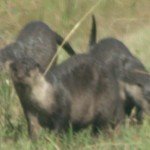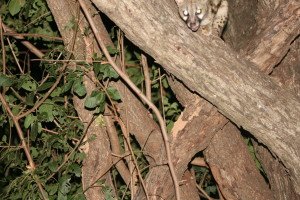
BIRD ON A WIRE – A Little Bittern enjoying its man-made perch & prime conditions
Patience is what comes to mind when I think of Nylsvley Nature Reserve, an ephemeral floodplain between Modimolle (Nylstroom) and Mookgophong (Naboomspruit) in the Waterberg region of Limpopo province.
Although Nylsvley is the largest floodplain in South Africa, covering up to 16 000 ha when fully inundated, the cycle of flooding is erratic, dynamic and unpredictable. It is probably only totally flooded once a decade, while every third year or so, below-average rain in the catchment area on the eastern slopes of the Waterberg Mountains causes the floodplain to remain bone-dry.
This was my third visit to Nylsvley and finally a good year in terms of flooding, my arrival in mid-March obviously helping.
Nylsvley is famous for its waterbirds, many of which – your bitterns, crakes, rails and warblers – are skulking at the best of times, so a lot of patience is required to spot these shy species.
And then you have the tropical specials, which are not only skulking, but also few and far between on the ground. One of these is the Lesser Gallinule, a summer visitor to isolated parts of northern South Africa and a bird I have been wanting to see for many years.
Vogelfontein, on the northern edge of the reserve, is the most famous part of Nylsvley – more than a hundred waterbird species have been recorded in this area of flooded rank grassland, with hides, a road and raised dykes for better viewing, making it South Africa’s richest wetland.
But staying overnight at Nylsvley enabled me to visit the centre of the reserve for the first time and, in particular, the Jacana Hide, which is upstream from Vogelfontein. A walkway takes you through flooded reedbeds, before the vista opens up at the hide, giving you a view down the channels of the Mogkalakwena River.
Heading to the hide from the parking lot, the portents were good as I was privileged to not only see a handful of African Clawless Otter but also to see them indulge in the sort of natural behaviour that usually comes with a David Attenborough voice-over.

A blur of otters … doing the latrine dance
Before the metal walkway through the reeds starts, there is a grassy track and there, out in the open on this path, were these otters waggling their hindparts in some sort of dance. It was all a bit reminiscent of Miley Cyrus with sniffing of rear ends going on too as they whirled around each other, the slick, sleek black bodies of the otters merging together.
After nearly a minute they disappeared back into the water and reeds on either side of the track, but there was a strong urine-like smell at the spot where they performed, so I presume they were indulging in the ritualised latrine dance described by Somers in 1997.
Upon arriving at the Jacana Hide, thrilled by the mesmerising otters, I discovered two other people there, photographers, and they mentioned that they had seen Lesser Gallinule there the previous day.
Convinced that this must be my lucky day, I hunkered down for a long stay, eager to catch a sighting of a bird notorious for only making brief emergences from the thick, rank vegetation it favours.
Not that I was bored. There was a steady flow of traffic and I decided to rename Jacana Hide the Squacco Heron Airport as these birds that are normally easily overlooked were continually coming and going overhead, like aeroplanes approaching or taking off.
There were also Purple Heron, Levaillant’s Cisticola, Little Bee-Eater, African Fish Eagle, Malachite Kingfisher, African Reed Warbler, Whitefaced Duck, Pied Kingfisher, Cape Reed Warbler and Spurwinged Goose around. Even a Bearded Woodpecker paid a visit to the trees surrounding the main pool.
And then, with the sun getting low behind the thorn trees, the plump purple body of a Gallinule emerged on to a sandbank in front of the hide.
Great excitement.
But hold on, the bigger Purple Gallinule is common at Nylsvley and, if you’re not entirely sure of the size difference, one needs to look at the frontal shield – a hard piece of skin extending from the base of the upper bill over the forehead.
Both the Purple and Lesser Gallinule have bright red bills, but the Purple has a red frontal shield as well, while the scarcer Lesser has a bright blue to apple-green frontal shield.
I find size differences to be rather a subjective issue and I prefer to use more definite identification points, so I was focusing in on this Gallinule’s head, hoping to see a different colour than red above the beak.
Sadly, it was clearly red and my bird was the common Purple Gallinule.
Oh well, keep waiting.
The light was starting to get poor as the sun dipped ever lower and I was starting to give myself five minutes more … at five-minute intervals.
Eventually, another Gallinule emerged on to the sandbank. Was it the same one? Hang on, there seems to be something different about this one … it’s smaller.
With excitement growing, up went the binoculars for a detailed examination, honing in on the frontal shield. Which was hard work because of the poor light and the bird’s annoying habit of foraging whilst facing away from the hide!
Eventually, with frustration starting to overtake excitement, the Gallinule went for a stroll along the sandbank and turned to face the hide!
And there it was … a blue frontal shield!
My first Lesser Gallinule and it eventually gave me a wonderful sighting, fit for a lifer, as it paraded along the sandbank as a reward for my patience.
With the sun setting, it was time to return to camp after an exhilarating afternoon, completed by a couple of Southern Pochard flying in and then a friendly Common Large-Spotted Genet visiting my braai that evening.

Playing peek-a-boo with a genet …
Vogelfontein is also a highly-rewarding spot, especially when it is flooded.
I knew conditions were good when I spotted a Little Bittern clambering along the barbed wire fence alongside the road, using it as a hunting perch with water below right up to the road.
There were conspicuous Black Crake next to the road as well and Hottentot Teal, Wood Sandpiper and Threebanded Plover in the pools that had formed in the grassland. Whitewinged Widows were zitting around energetically.
My first stop was Kingfisher Hide and, as I alighted from the car, I happened to look skywards to enjoy a beautiful sunny day. There up above, soaring, dipping and diving about were a number of Blackwinged Pratincole, another lifer!
They were wonderful to watch, gliding around in a clear blue sky, flashing their forked, white tails and bellies. Some Amur Falcons were sharing the heavens with them.
Walking along the raised dykes on the other side of the road, numerous good sightings were made, including Blackcrowned Night Heron, Great White Egret, Burchell’s Coucal, Black Egret, both Grey and Blackheaded herons, Squacco Heron, Woodland Kingfisher, African Jacana, European Bee-Eater and Willow Warbler.

Spotted Flycatcher
Away from the wetlands, the woodlands around Nylsvley – both broad-leaved and Acacia – are excellent for birding.
A Black Cuckooshrike was right next to the campsite, in a bird party with Chinspot Batis, Paradise Flycatcher and Diederick Cuckoo.
Some Bluecheeked Bee-Eaters were patrolling the dirt road to the entrance gate, along with Burchell’s Starling and Flappet Lark.
One has to exit the Nature Reserve and drive along the railway line to get to Vogelfontein, but there is good Acacia birding along this drive, with Purple Roller, Brownheaded Kingfisher, Spotted Flycatcher, Southern Black Tit and Whitebrowed Sparrow Weaver present.
Sightings list
Crested Francolin
Neddicky
Redeyed Dove
Black Cuckooshrike
Laughing Dove
Swainson’s Francolin
Glossy Starling
Chinspot Batis
Paradise Flycatcher
Forktailed Drongo
Grey Hornbill
Diederick Cuckoo
Burchell’s Starling
Cattle Egret
Redbacked Shrike
Speckled Mousebird
Bluecheeked Bee-Eater
European Swallow
Cape Turtle Dove
Purple Roller
Brownhooded Kingfisher
Helmeted Guineafowl
Crowned Plover
Southern Grey headed Sparrow
Spotted Flycatcher
Grey Lourie
Little Bittern
Stonechat
Common Waxbill
Black Crake
Blacksmith Plover
Southern Masked Weaver
Whitethroated Swallow
Hottentot Teal
Wood Sandpiper
Threebanded Plover
Greater Striped Swallow
Whitewinged Widow
Blackwinged Pratincole
Amur Falcon
Blackcrowned Night Heron
Great White Egret
Burchell’s Coucal
Black Egret
Grey Heron
Blackheaded Heron
Squacco Heron
Tawnyflanked Prinia
Reed Cormorant
Longtailed Shrike
Plains Zebra
Woodland Kingfisher
African Jacana
European Bee-Eater
Willow Warbler
Rattling Cisticola
Orangethroated Longclaw
Common Moorhen
Southern Black Tit
Redwinged Starling
Whitebrowed Sparrow Weaver
Cape Dwarf Gecko
Blackeyed Bulbul
Yellowbilled Hornbill
Tsessebe
Flappet Lark
Purple Heron
African Clawless Otter
Levaillant’s Cisticola
Little Bee-Eater
African Fish Eagle
Malachite Kingfisher
African Reed Warbler
Bearded Woodpecker
Whitefaced Duck
Pied Kingfisher
Cape Reed Warbler
Spurwinged Goose
Purple Gallinule
Lesser Gallinule
Southern Pochard
Hadeda Ibis
Common Large-Spotted Genet
Kurrichane Thrush
Tree Squirrel
Longbilled Crombec
Cardinal Woodpecker
Southern Tree Agama



